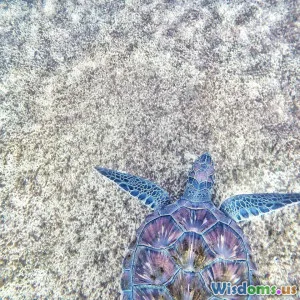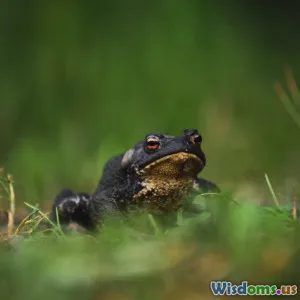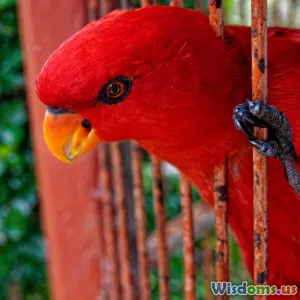
Conservation Efforts Grounded in Evolutionary Biology
7 min read Explore how evolutionary biology shapes effective conservation strategies to protect biodiversity and ensure species survival. (0 Reviews)
Conservation Efforts Grounded in Evolutionary Biology
In an era marked by accelerating environmental changes and escalating threats to wildlife, the pressing need to safeguard biodiversity has never been greater. Traditional conservation strategies often face challenges adapting to rapidly shifting ecosystems and genetic variability. However, integrating principles from evolutionary biology offers powerful insights and innovative tools to enhance conservation success. This article explores how the deep understanding of evolutionary processes - such as natural selection, genetic diversity, and adaptation - shapes modern conservation practices and helps preserve the animal kingdom’s vast richness.
Understanding the Role of Evolutionary Biology in Conservation
Evolutionary biology, at its core, unravels the genetic and ecological narratives of how species change over time. By appreciating how natural selection and genetic drift drive diversity, conservationists can forecast how species might respond to future environmental pressures. This foundation transforms conservation from reactive protection into dynamic stewardship.
A key focus is genetic diversity, which constitutes the raw material for evolution. Populations rich in genetic variation possess a higher potential to adapt to changes such as climate shifts, emerging diseases, or human-induced habitat fragmentation.
Why Genetic Diversity Matters
Research consistently shows that smaller, genetically bottlenecked populations are more vulnerable to extinction. A telling example is the northern elephant seal population that faced near-extinction in the late 19th century due to hunting. With fewer than 100 individuals surviving, their genetic diversity plummeted dramatically. Although the population rebounded numerically, the low genetic variation compromises adaptability, increasing future extinction risks.
In contrast, species such as the African wild dog exhibit high genetic diversity, enabling them to maintain resilience despite habitat loss and infectious disease threats.
Evolutionary-Informed Conservation Strategies
1. Managing Populations for Adaptive Potential
Instead of solely focusing on increasing numbers, conservationists now prioritize population connectivity. Corridors that enable gene flow can prevent inbreeding depression, boost genetic exchange, and promote resilience.
For example, the Florida panther population was genetically supplemented in the 1990s by introducing individuals from Texas. This managed gene flow mitigated health problems such as heart defects, ultimately aiding recovery.
2. Protecting Evolutionarily Significant Units (ESUs)
Not all populations are equal from an evolutionary perspective. Identifying evolutionarily significant units (ESUs)—distinct populations with unique genetic characteristics—is critical. Protecting these units preserves unique adaptations and evolutionary trajectories.
The conservation of the California spotted owl involves managing different ESUs aligned with their genetic distinctions to safeguard local adaptation to varied environments.
3. Assisted Evolution and Genetic Rescue
Recent advances propose assisted evolution to accelerate adaptation proactively. Techniques such as selective breeding, translocation, or even gene editing might enhance species’ ability to cope with climate change or disease.
For instance, coral reefs devastated by warming seas see efforts to breed heat-resistant coral strains to bolster reef resilience — a real-world example where understanding evolutionary mechanisms guides urgent action.
4. Using Phylogenetics to Prioritize Species Conservation
Phylogenetic studies reveal relationships among species, allowing prioritization not just by species count but by evolutionary heritage. This ensures maximizing the protection of unique evolutionary history.
Conserving the tuatara in New Zealand—a reptile lineage dating back over 200 million years—preserves irreplaceable evolutionary information.
Real-World Successes
-
The Greater Yellowstone Ecosystem: Conservation integrated evolutionary principles by maintaining habitat connectivity for wolves and grizzly bears, preserving genetic diversity crucial for adapting to ecosystem changes.
-
Mountain Gazelle in Israel: Genetic studies helped craft reintroduction programs ensuring diverse gene pools and better survival prospects.
-
The Seychelles Warbler: Intensive genetic monitoring and management averted inbreeding depression, lifting the species back from brink of extinction.
Challenges and Ethical Considerations
While evolutionary biology opens promising conservation avenues, interventions like assisted gene flow and genetic modifications raise ethical debates about human interference in natural processes. Balancing caution and innovation demands careful, informed discussions involving scientists, policymakers, and the public.
Conclusion: Evolution as a Conservation Compass
Conservation strategies anchored in evolutionary biology provide a powerful compass to navigate the challenges of preserving life on Earth. By valuing genetic diversity, managing evolutionary units, and employing adaptive tools, we can foster robust ecosystems equipped to endure ongoing and future threats.
As Dr. Stephen Palumbi, a leading marine biologist, asserts: "Understanding evolutionary biology isn't just academic; it’s essential for crafting conservation strategies that will work in a rapidly changing world."
Facing increasing pressure from habitat loss, climate change, and human exploitation, embracing evolutionary insight elevates conservation from maintaining the status quo to actively fostering resilience, adaptability, and survival for generations to come.
Call to Action
Awareness and support of evolutionary-based conservation can make a profound difference. Support organizations investing in genetic research, promote habitat connectivity, and advocate for policies that incorporate evolutionary science. Together, we can steward the animal kingdom’s diversity toward a vibrant and sustainable future.
References and Further Reading:
- Frankham, R., Ballou, J.D., & Briscoe, D.A. (2010). Introduction to Conservation Genetics.
- Allendorf, F.W., Luikart, G., & Aitken, S.N. (2012). Conservation and the Genetics of Populations.
- Palumbi, S.R. (2001). Evolution - Humans as a Geological Force. Science 293(5536), 1786-1790.
- Hughes, A.R., et al. (2008). Ecological consequences of genetic diversity. Ecology Letters, 11(6), 609-623.
Rate the Post
User Reviews
Popular Posts





















